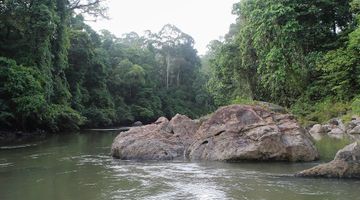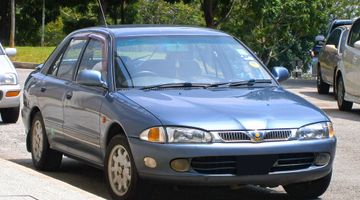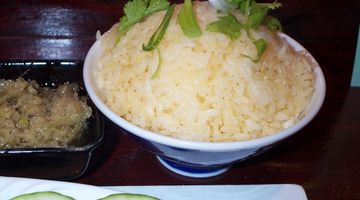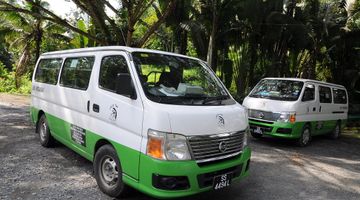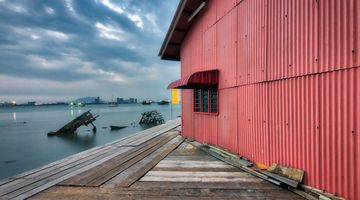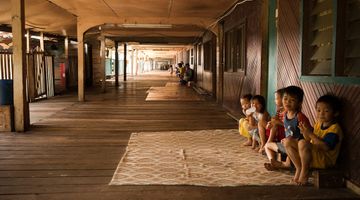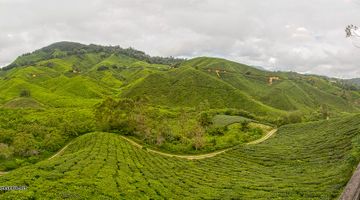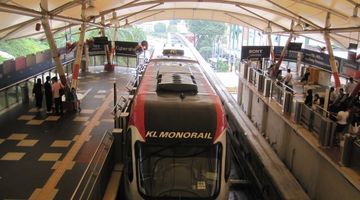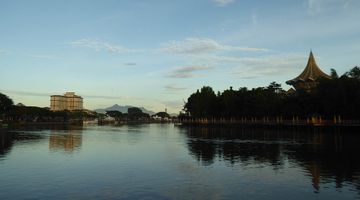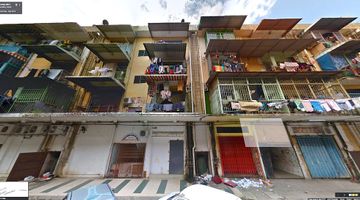Malaysia Budget Travel – When and Where to Go and How Much It Will Cost
More tourists are visiting Malaysia each year from the Western backpackers to wealthy visitors from the Middle East. But, despite the level of tourism, Malaysia budget travel isn’t as easy as in Thailand, Vietnam and Cambodia. Many tourists often travel to Malaysia for shopping in Kuala Lumpur at places like KLCC Shopping Mall, Midvalley Mega Mall and Pavillion. And those who do want to travel around the country often find it to be more expensive than they expect.
Is it possible to travel in Malaysia on a low budget?
Let’s start by addressing: is Malaysia expensive to visit? The answer is that it’s possible to visit Malaysia on the cheap if you plan your trip carefully.
Staying in the central areas such as near Kuala Lumpur Sentral Station and KLCC in Kuala Lumpur can be expensive. Budget hotels are around KL Sentral in Brickfields neighbourhood. Hostels and guesthouses are usually in Bukit Bintang, Chow Kit or Chinatown where you can find a bed for as low as $4 per night in a hostel. If you’re looking to find a budget hotel, you can expect to pay more. The prices are similar, if not higher, in other parts of the country in the non-touristy destinations.
When eating out, the places most recommend for tourists are often overpriced. For example, Jalan Alor, a street lined with hawkers serving local food tend to have prices up to 50% higher than elsewhere. Few Malaysians come here to eat. If you want to reduce your daily cost in Malaysia for food, consider visiting one of the food courts, especially those away from central areas. Whenever you eat, always ask for a menu and make a mental note of what you ordered as some restaurants do overcharge tourists, both intentional and not.
If you want to eat at one of the self-service Indian restaurants, always double check the bill. Not everyone calculates the order correctly, and many of the waiters work by memory. Ask for a receipt and double check the amount you need to pay.
Is it expensive in Malaysia to drink alcohol?
Alcohol isn’t as readily available as neighbouring countries in SEA. You can only find reasonably priced beer in some of the Chinese restaurants and at the food courts, which tend to be three small cans for around RM 12 ($2.90) or higher depending on the brand. Larger 660ml bottles are sometimes on sale here too. If you visit the bars, expect to pay much higher for a can or a bottle of beer and top-shelf liquors are very expensive.
If you're staying near KL Sentral, some of the Indian-owned convenience stores sell cans and bottles of beer for as low as RM 5.50 for a 500ml can ($1.30). Alcohol prices in Malaysia are high compared to neighbouring SEA countries and buying from the convenience stores are the cheapest option. Don't expect alcohol in halal restaurants such as the Indian Muslim or Malay ones.
Budget travel in Malaysia: independently or on a packaged tour?
Most Western tourists backpacking Malaysia will do so independently. Other nationalities, such as the Chinese tourists, almost always come as part of a packaged tours.
The pros and cons of independent travel to Malaysia
The pros
- You can plan and stick to a budget.
- Getting around the country is easy giving tourists more flexibility.
- Endless amounts of delicious food are available at meager prices if you know where to eat.
The cons
- Malaysia has a lot of public holidays such as Chinese New year and Eid taking place over a long weekend. Bus tickets sell out fast and there are lots of traffic jams.
- Admission fees in Malaysia are often dual priced. Foreigners always pay more. The attractions advertise as MyKad holders and non-MyKad holder prices. All Malaysian citizens hold a MyKad.
- Foreigners now have to pay a tourist tax of RM 10 ($2.40) per person, per night at hotels in Malaysia. This can add the costs up significantly if you’re travelling on a budget.
The pros and cons of a packaged tour to Malaysia
The pros
- A tour company will meet you at the airport and takes care of logistics. All you need to do is enjoy the tour.
- Guides take you to the destinations and offer a backstory and facts to help you understand what you’re seeing.
- All admission fees and tourist taxes are included so you won’t be faced with any unexpected costs.
The cons
- Tours are expensive.
- You have limited time and less flexibility.
- Some tours are overpriced. You should be able to make the same trip for less independently.
- You may end up in a big group where it’s difficult to ask your tour guide questions.
Top budget itineraries
There are lots of affordable places to visit and inexpensive accommodation if you know where to go. Most tourists visit Kuala Lumpur and Penang, which tend to cost more than Tanah Rata, Malacca, Sabah and Sarawak. More rural and off-the-beaten-path destinations have fewer hotels making the price higher.
Tanah Rata
You can take a coach from Kuala Lumpur to Tanah Rata in the Cameron Highlands for between RM 35 to RM 40 ($8.40 to $9.60) one-way. The journey takes between three and a half to four hours depending on the season and traffic. It's difficult to get around in Cameron Highlands unless you rent a car or join a tour. Taxis are available but relying on them all the time becomes expensive. Budget accommodation is available in Tanah Rata as the area gets a large number of domestic tourists.
Malacca and Johor
The historical city of Malacca and Johor are to the south of Kuala Lumpur by bus. Expect to pay between RM 10 to RM 15 ($2.50 to $3.60) to get to Malacca (two hours) and up to RM 40 ($9.60) for Johor (five hours). Always check if there’s an upcoming public holiday as ticket prices increase and sell out quickly. Malacca was a former Portuguese colonial port and has quite a few historic buildings remaining. Johor is a great place to base yourself for a cheap trip to Singapore.
Sabah
Domestic flights travel to both Sabah and Sarawak from various places in West Malaysia including Kuala Lumpur, Penang and Johor. Kota Kinabalu, Sabah’s capital, stretches along the coast. A short ferry ride can take tourists to the nearby islands with Manukan Island being the most popular. Mount Kinabalu, in Kundasang Ranau, is two and a half hours from the city. The food in Sabah is inexpensive and very cheap by western standards. Expect a dish to cost from 6 RM ($1.40) and upwards. The prices in Sabah are similar to those in Kuala Lumpur.
The best free attractions in Sabah include the Signal Hill Observation Deck, which gives a great view of Kota Kinabalu. Tourists also like exploring Gaya Street where an open market held on Sundays. The Waterfront is a pleasant place to take a stroll and get some photographs of the sea too.
Sarawak
Kuching, the capital of Sarawak, and Miri, the second city, are the two most popular destinations. Sarawak is famous for national parks and caves. Food is cheaper than both Kuala Lumpur and Sabah with a plate of local noodles costing just RM 4 to RM 5 ($1). Free activities include exploring Kuching’s Waterfront and walking along Indian Street. You can also search for and photograph the cat statues in the city centre too. Sarawak is one of the most affordable cities and is often included in the top budget itineraries in Malaysia.
Kuala Lumpur and Penang
If you decide to spend most of your time in Kuala Lumpur and Penang, check out the following free attractions. KLCC Park, Perdana Botanical Gardens, Merdeka Square and Central Market are the best places to visit in Kuala Lumpur. You can also check out Penang’s temples, beaches and street art for free.
Best cheap hostels/hotels in Malaysia
The best areas to stay in Kuala Lumpur if you're travelling on a low budget include Brickfields (near KL Sentral Main Station), Bukit Bintang and Petaling Street. Knowing the best low-key places to stay can save the savvy traveller a considerable amount that could be better spend on other activities.
The best accommodation (prices based on one traveller and stated in USD):
- PODs The Backpackers Home & Café in Brickfields Kuala Lumpur. From $7 to $8 for a bed in a dorm or $16 for a single room with a shared bathroom.
- M & M Hotel. Basic rooms start at $18 per night. Brickfields, Kuala Lumpur.
- RL Budget Accomodation. Some of the cheapest accommodation with rates as low as $4 for a dorm bed or $12 private room with fan in Pantai Cenang, Langkawi.
- Cas Idaman Motel. Expect at least $29 per night for a private room in Pantai Cenang, Langkawi.
- The Frame Guesthouse. Beds cost between $9 and $11 for a bed in a dormitory in Georgetown, Penang.
- Lagenda House, $21 per night for a double bed with a private bathroom in Georgetown, Penang.
- SKYPOD Boutique Hostel. Starts prices from $7 for a bed in a dorm in Kota Kinabalu, Sabah.
- Monaco Boutique Hotel. From $21 per night for a double room in Kota Kinabalu, Sabah.
- Check In Lodge. A bed in a dorm starts at $6 per night or $20 for a private room in Kuching, Sarawak.
- Padungan Hotel. A double room with en-suite costs between $18 and $21 in Kuching, Sarawak.
Top tips for budget travel in Malaysia
If you’re planning a trip to Malaysia, check out the following less-obvious travel tips to help you save more money.
-
Join a free walking tour in Kuala Lumpur.
The local city government offers free weekly tours to take tourists around Kuala Lumpur with a knowledgeable, English speaking guide. Tours often last two and a half hours and are tip-based, which means you give as much or as little as you can afford. If you’re interested in joining, visit the Free Dataran Merdeka Heritage Guided Tour’s website for times and the meeting point. -
Be savvy with public transport
Use the public transportation such as LRT and Monorail in Kuala Lumpur. But, in other major cities around Malaysia where mass transport doesn’t exist, rely on GrabCar and Uber rather than taxis. When you arrive at KLIA, use the Airport coach rather than the Express railway. -
Local street food
You’ll find street food around Malaysia with hawkers selling snacks on the streets to noodles inside restaurants. The food is cheap and costs a few ringgits for a decent meal. Eating here will save a considerable amount compared to the restaurants aimed at tourists. -
Drinking Alcohol
Expect the price of alcohol to be quite high by local standards, especially in the bars and pubs. A top money saving tip is to find a local non-Halal convenience store and buy reasonably priced beer from there. -
Be smart about accommodation
Tap water isn’t safe to drink in Malaysia, and the cost of buying bottled water from the shop adds up quickly. Find a guesthouse that offers filtered water or allows you to boil water in your room. Buying bottles each day will be expensive over a couple of weeks. -
Shopping in Malaysia
Many tourists come to Malaysia for shopping. You’ll find bargains in Chinatown and Little India for clothes, souvenirs and food. -
Visit the free places
Almost every city in the country has free places to visit such as Perdana Botanical Garden and Merdeka Square in Kuala Lumpur. Buddhist temples in Penang are also free to enter. -
Use the bus to travel long distances
Buses are often cheaper than flying. Several buses depart daily between Kuala Lumpur and Malacca, Johor, Cameron Highlands and Penang. If you want to visit East Malaysia, monitor the airlines, such as Malindo or Malaysian Airlines, for one of their regular ticket promotions. -
Take advantage of Couchsurfing
Couchsurfing is popular in Malaysia, and you can stay for free with a local host. This not only gives you the chance to save on accommodation but you also meet and make friends with a local Malaysian. -
Get a SIM card with a data plan (internet package).
Data plans are inexpensive in Malaysia, and you can easily buy a SIM card from the airport or phone shops. Data plan costs as low as $3 for 7 days or $10 for 30 days. Having your own internet saves costs on sitting in cafes and gives you the flexibility to be connected whenever you want.
Conclusion:
Malaysia is an affordable travel destination if you plan your trip carefully. Don’t expect the same prices as Thailand, Vietnam and Cambodia, but the food is cheap and accommodation is inexpensive if you know the right places to go.








